Have you been getting smoke from your fireplace and it’s filling up the entire house? You don’t need to panic: there are things you can do to identify the cause and ensure your fire continues burning safely for years to come. In this blog post, we’ll explain why smoke may be billowing out of your chimney then provide simple steps on how to fix it so you can go back to enjoying warm fires in no time. Keep reading to find out more!
Why Is Your Fireplace Smoking?
A Well-Insulated House
One of the most common reasons for a fireplace to smoke is a lack of insulation. When your home’s air tightness is not up to par, air can escape through cracks and openings in walls and attics and drafts which can cause smoky fireplaces. To prevent this, make sure the house is properly insulated with plenty of caulk and weather-stripping around all doors and windows.
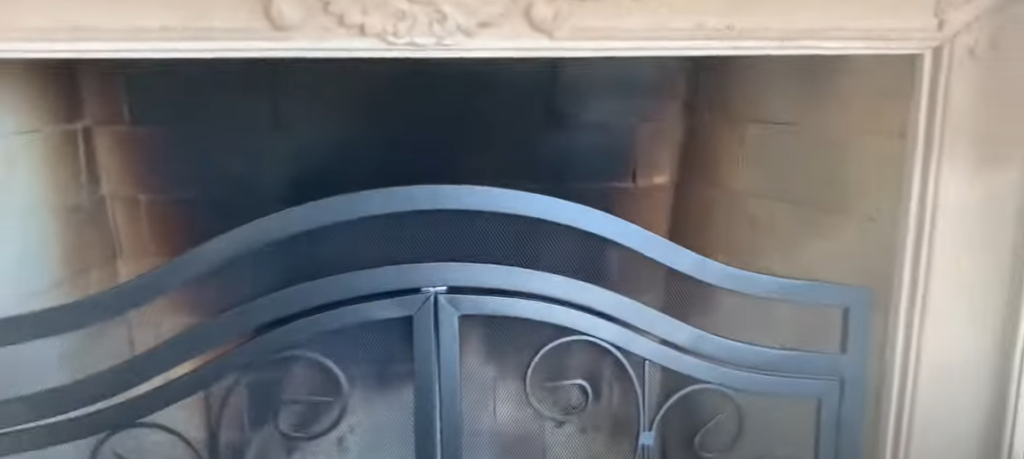
Warm Outdoor Temperatures
Another possible cause of smoke in the fireplace is warm outdoor temperatures that can cause a draft to enter the house and be drawn into the fireplace. This will then draw cold air from outside, creating an updraft and pushing smoke back down into your living space. To prevent this from happening, it’s important to make sure there are no gaps around windows or doors that could allow drafts in.
Damper & Chimney Cap Problems
A poorly maintained chimney can also be to blame for smoke entering the house. Make sure your damper is open and in good working condition, as this will allow smoke to escape when it is released from the firebox. Additionally, having a chimney cap installed will prevent animals and debris from blocking the airflow in your chimney, allowing smoke to exit more freely. [1]
Chimney Needs Cleaning
Lastly your chimney needs to be regularly in order to ensure that smoke has a clear path out of the house. This is because soot and creosote can build up in the chimney over time and block airflow. The last thing you want is for this buildup to get in the way of exhaust gasses making it out. Get your chimney professionally cleaned every few years or use a chimney brush yourself to reduce the risk of smoke entering your home.
Wet Firewood
One of the most common causes of smoky fireplaces is wet firewood. Using wet or unseasoned wood can produce a lot of smoke due to its high moisture content, so always make sure your logs are dry before use. If you have access to it, burning seasoned hardwood is best as it produces less smoke and lasts longer than softwood.
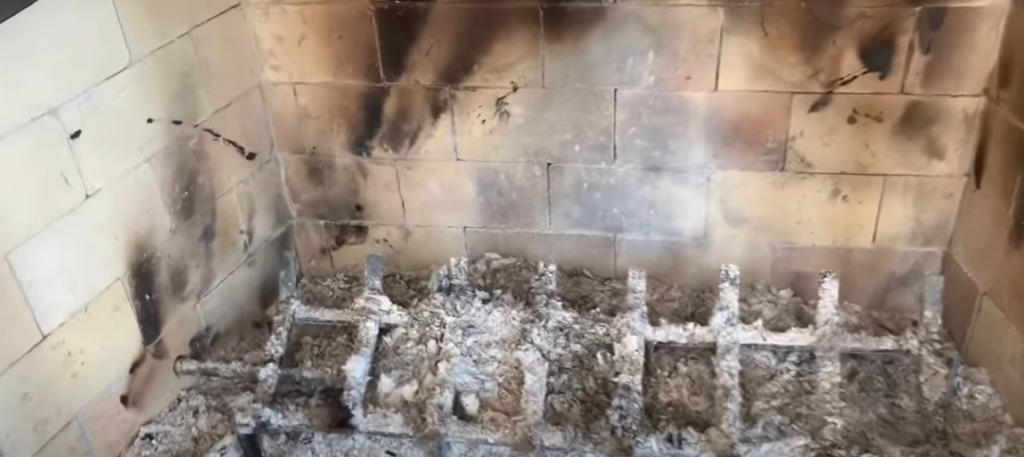
Your Fireplace is Poorly Built
If your fireplace was not built correctly, it may be causing smoke to get in the house. Poorly installed fireplaces can often cause air leaks which will draw outside air into the house and push smoke back down. Consider having a professional inspect your fireplace and make sure proper building codes were followed when constructing it.
By following these steps, you should be able to fix any issues that are causing smoke in your home from your fireplace! If all else fails, contact a professional who can help diagnose and repair the issue for you. [2]
How to Fix?
If your house is experiencing smoke from a fireplace, there are a few steps you can take to get the problem under control.
First, check for air leaks around the flue or chimney. Look for any gaps or cracks that may be allowing cold air into the system and make sure all seals are properly sealed. You may need to have a professional come in to inspect it further if repairs are necessary.
Next, check the type of fuel being used in the fireplace. If it is burning too hot or too much fuel at once, this could result in increased smoke production. Consider switching to a lower grade of fuel or reducing the amount of fuel used per fire.
Finally, make sure your chimney is clean. A buildup of creosote can increase smoke production, so it’s important to keep your chimney clean and free of debris. Have a professional come out and inspect the chimney annually to ensure that it is up to code and safe for use.
By taking these steps, you should be able to reduce or eliminate excess smoke from your fireplace. If the problem persists or worsens, contact a qualified technician for help. They can assess the issue further and provide you with solutions to get the problem under control quickly. [3]
Why Smoke from A Fireplace Is Bad
Smoke from a fireplace can be dangerous to your health and the environment. Inhaling smoke, even in small amounts, can cause respiratory problems such as asthma and allergies, and even long-term illnesses like cancer. The indoor air quality of your home is also affected by smoke as it accumulates over time, leaving an unpleasant smell throughout the house.
In addition to being hazardous to your health, smoke from a fireplace can harm the environment. Smoke particles are into the atmosphere and contribute to air pollution levels in your area. This is particularly concerning for those who live in cities or highly populated areas because of the potential for elevated air pollution. [4]
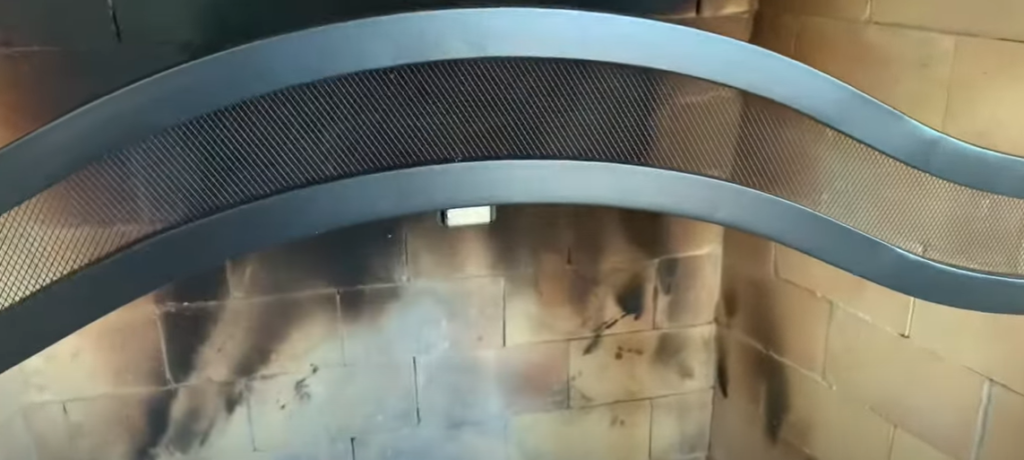
How Often You Should Clean Your Chimney
Chimney cleaning is an important part of fireplace maintenance. It’s recommended to have your chimney swept at least once a year, preferably in the fall before you start using the fireplace regularly. Additionally, if you burn wood with a high sap content or use accelerants (such as oil-soaked newspapers) you should clean more often — every two to three months — since these can cause buildup and clog the flu faster. If you use gas logs, it’s not necessary to sweep them since they don’t produce soot and creosote like wood does; however, your annual inspection is still important for making sure there are no blockages in the flue or other problems that could lead to dangerous carbon monoxide buildup.
When it’s time to have your chimney swept, make sure you hire a professional and certified chimney sweep. Not only are they trained specifically for this job, but the National Fire Protection Association (NFPA) also recommends having your chimney inspected by a professional in addition to cleaning. They’ll be able to look for signs of damage and make sure the flue is clear so you can safely use your fireplace without worrying about smoke entering your home or carbon monoxide poisoning. Cleaning your chimney regularly will not only help prevent smoke from coming into your house but will also prolong the life of your fireplace and keep it working efficiently for years to come.
How to Clean Your Fireplace to Reduce Smoke
In order to reduce the amount of smoke in your home, you will need to ensure that your fireplace is properly cleaned and maintained. Here are a few tips on how to do so:
- Clean out the ashes and other debris from your fireplace regularly. Make sure that all embers are extinguished before cleaning out the ashes.
- Check for any cracks or holes in the chimney liner or walls of the fireplace as this can cause drafts which result in smoke coming back into the house. If there are any issues, have them repaired promptly by a professional.
- When starting a fire, use only dry wood and make sure it’s properly seasoned (to prevent too much smoke). Also, make sure the fire is built correctly and has plenty of air flow.
- Make sure that your fireplace flue damper is open when the fire is burning and closed when it’s not in use. This will help control draft and prevent smoke from coming back into your home.
- Have your chimney cleaned annually by a professional chimney sweep to ensure that there are no blockages or buildup of creosote which can result in smoke coming back into your home.
Cleaning and properly maintaining your fireplace can go a long way towards reducing the amount of smoke inside your house. Keeping up with regular maintenance will also help to reduce any risks associated with having an unclean fireplace as well as increase its efficiency. So make sure to follow the tips above and you’ll be on your way to enjoying a smoke-free home. [5]
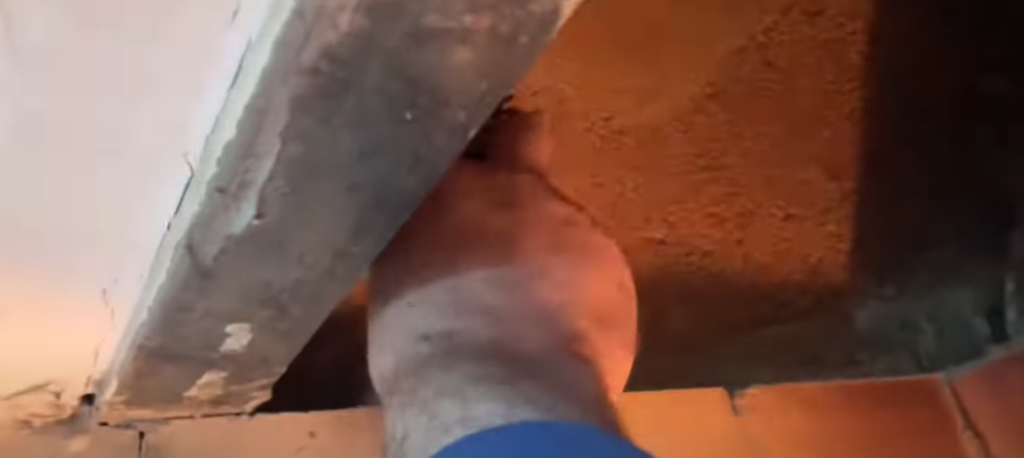
Things to Avoid
When dealing with fireplace smoke in your house, it is important to avoid certain activities that can worsen the situation. Burning wet or green wood can produce more smoke than dry wood and create a buildup of creosote in the chimney, which increases risk for a chimney fire. Additionally, burning large logs can lead to an over-firing of the fireplace, resulting in smoke being pushed back into the house. Furthermore, closing up the damper too soon after lighting a fire also prevents proper ventilation and can cause smoke problems.
In summary, burning wet wood, large logs, closing the damper too soon after lighting a fire, and using an unvented gas log set without adequate ventilation can all contribute to more smoke in your house. Taking to avoid these activities will help with fireplace smoke problems in your home .
To fix existing smoke problems, it’s best to call a professional chimney sweep to inspect and clean the flue. The pros can also identify any other potential causes of your smoke issues and recommend solutions accordingly. They may also advise you on how to properly use your fireplace for optimal performance and safety in the future. With the right guidance and attention, you’ll be able to enjoy a cozy fire without all the smoke!
Will a Fan Get Rid of Smoke?
No, fans will not get rid of smoke in a house. The fan may help to circulate the air, but it won’t clear out all the smoke particles that have already settled into your home. To effectively deal with fireplace smoke, you must create a draft and find a solution to any potential blockages in your chimney.
A quick test to see if there is a blockage or insufficient draft in your chimney is to open a window and hold up burning paper or an incense stick near the vent/flue.
If smoke from the fire goes up the flue without being drawn outside, then you likely have an issue with either draft or a blockage. Both of these issues can be addressed by having the vent/flue inspected and cleaned, as well as using a chimney cap to reduce the amount of air going up your chimney.
Once you have taken steps to improve airflow through your vent/flue, you can also look into ventilation solutions such as exhaust fans or air-circulators to help move the smoke out of your home more quickly. Additionally, keeping windows open for a few minutes after lighting a fire can help dissipate the smoke in the room that contains the fireplace. With these strategies, you should be able to successfully get rid of smoke from your house. [6]
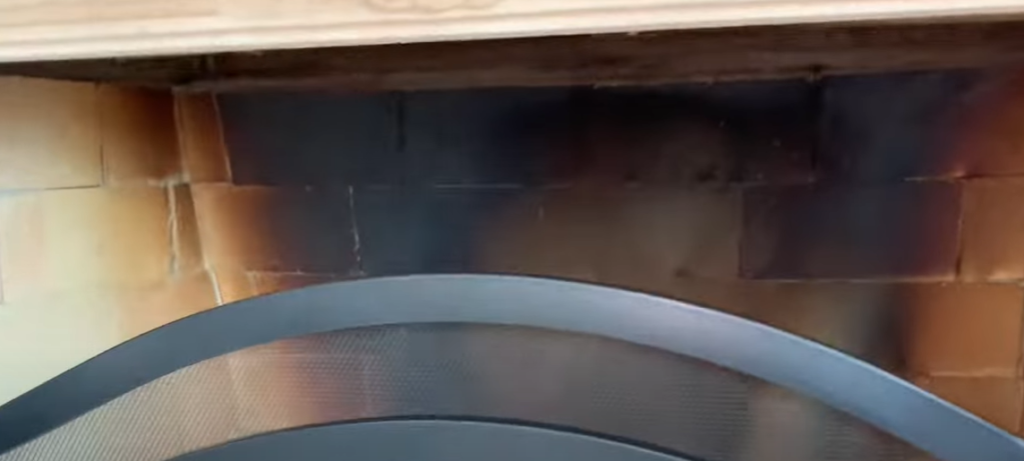
FAQ
How do I get rid of smoke from my fireplace in my house?
There are several steps you can take to reduce the smoke in your home from a fireplace.
- Make sure that the damper is open when you light your fire and closed when you finish burning. This will allow for proper ventilation and should reduce the amount of smoke entering your home.
- Ensure that there is enough air coming into the stove or fireplace so that it can burn properly. If there isn’t enough oxygen, the fire won’t be able to burn correctly, which could result in more smoke being released into the house.
- Check for downdrafts near the chimney and make sure that they are sealed off if present. Downdrafts can cause smoke to be pulled back down into the house and can be very frustrating. 4. Have your chimney inspected regularly to ensure that it is clean and free of debris or blockage that could cause smoke to backdraft into the home.
- If all else fails, you may need to install a smoke guard on your fireplace so that it can reduce the amount of smoke entering the house. This should help to keep your air quality at an acceptable level.
- Finally, make sure that you are using dry wood when starting a fire as wet wood can produce more smoke than dry wood would. Taking these precautions will help reduce the amount of fireplace smoke in your home and help keep your indoor air quality in check!
Why is my fireplace making my house smokey?
Smoke from a fireplace can be caused by several issues. It could be that the damper is not enough, allowing smoke to escape into your living space instead of up the chimney flue. Another possible reason for smoke in the house is that there may not be enough draft to keep the fire burning hot and clean. A chimney that has been filled with debris over time can also cause excessive smoke in the home. To fix these problems, it’s important to inspect the chimney and flue system first.
Will fire smoke smell eventually go away?
Yes and no. Smoke smell can linger in a home for an extended period of time, especially if the original source of the smoke is not fixed or addressed. To get rid of the smell, it’s important to find out what is causing it first and fix that issue. Doing things like airing out rooms by opening windows, vacuuming furniture and carpets, and using air fresheners can help reduce the smoke odor. If the issue persists, contact a chimney professional to inspect your fireplace system and flue. They will be able to identify any issues that may be causing smoke in your home. By addressing the underlying cause of smoke in your house, you will be able to prevent further damage from occurring and eliminate smoke odors.
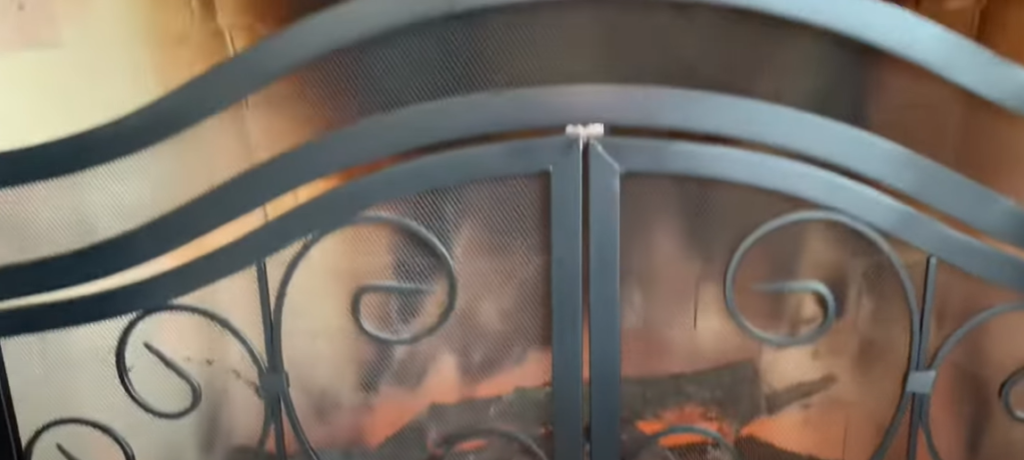
Is it safe to sleep in a house after smoke?
It is generally not recommended to sleep in a house after smoke has been present. Smoke contains hazardous particles and chemicals that can be dangerous when breathed in for prolonged periods of time. If you are able to determine the cause of the smoke, take steps to fix it as soon as possible. If your home still smells like smoke, make sure to open windows and air out the room before attempting to sleep or spend extended amounts of time inside. It’s also important to contact a professional if you believe there are any safety risks associated with having smoke in your home. They can help identify any potential hazards and provide advice on how best to address them.
Is it safe to wear clothes after a house fire?
No, it is not safe to wear clothes after a house fire. Clothing can be contaminated with smoke particles, soot, and other hazardous materials from the fire. Additionally, any fabrics that are exposed to high temperatures may have been weakened and could pose a risk of further damage or even burns. It’s best to discard clothing items that were present during the fire or contact a professional before wearing them again. If you do decide to keep clothing items that were affected by the fire, they should be carefully washed in hot water with an appropriate cleaner before being worn again. It’s also important to take safety precautions when cleaning and airing out your home after a fire. Make sure all windows and doors are open and fans are running to clear the air of any smoke and soot particles. You should also have your home professionally inspected for smoke damage before entering it again. Finally, consider installing a carbon monoxide monitor in order to detect any dangerous levels of the gas that may linger within the house after the fire has been put out. Following these steps will help ensure that your home and clothing are safe after experiencing a house fire.
Can smoke get into walls?
Yes, smoke from a fireplace can get into walls and other parts of a home. It is typically caused by an inadequate chimney flue or venting system that permits smoke to escape the fireplace rather than being completely vented outside through the chimney. Smoke can also accumulate in tight, enclosed spaces such as attics and basements as well as between floors, leading to increased levels of indoor air pollution.
What materials absorb smoke?
Smoke is an airborne pollutant that can make its way deep into fabrics, upholstery, carpeting and other materials in your home. Absorbing smoke odors in the home requires products designed to specifically target them; some of these include activated charcoal, baking soda, coffee grounds and white vinegar. Activated charcoal has been known to be particularly effective at removing smoky smells from the air around it because of its porous surface area. It is often used in air purifiers or other odor-eliminating devices because of its ability to absorb pollutants that are suspended in the air. Baking soda is also great for getting rid of both minor and strong odors due to its alkaline properties which neutralize acidic particles like smoke. Coffee grounds and white vinegar are also capable of absorbing smoke odors, albeit more slowly than activated charcoal or baking soda. To use either of these methods, simply place a bowl of the material in whichever room you’re trying to deodorize; you can leave it there for several days until the smell has been reduced. You can also sprinkle them on carpets and furniture to help absorb odors even faster.
Useful Video: How to Keep Fireplace Smoke
Conclusion
The best way to address fireplace smoke in the home is to identify and address the cause. This will likely involve having a chimney sweep inspect the chimney, as well as making sure that all dampers are working correctly and that any blockages have been cleared. Additionally, installing a fan or an air purifier can help remove any existing smoke particles from the air. Taking these steps should help reduce or eliminate the problem with smoke from the fireplace entering into your home. With proper maintenance and attention, you can enjoy your fireplace without worrying about unpleasant smoke invading your living space.
References:
- https://verticalchimney.com/blog/fireplace-smoke-in-house/
- https://www.realsimple.com/home-organizing/cleaning/how-to-get-smoke-smell-out-of-house
- https://www.bmscat.com/2019/11/how-to-naturally-get-rid-of-smoke-smell-after-a-disaster/
- https://www.bobvila.com/articles/fireplace-smoke/
- https://love.firerock.us/blog/how-to-identify-and-fix-common-smoke-draw-issues
- https://chimneysplusgutters.com/6-reasons-your-fireplace-fills-the-house-with-smoke-how-to-fix-it/

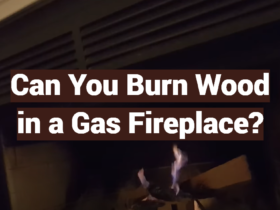
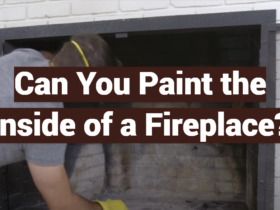

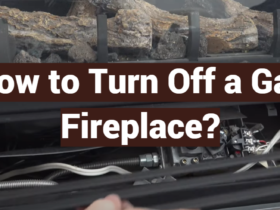
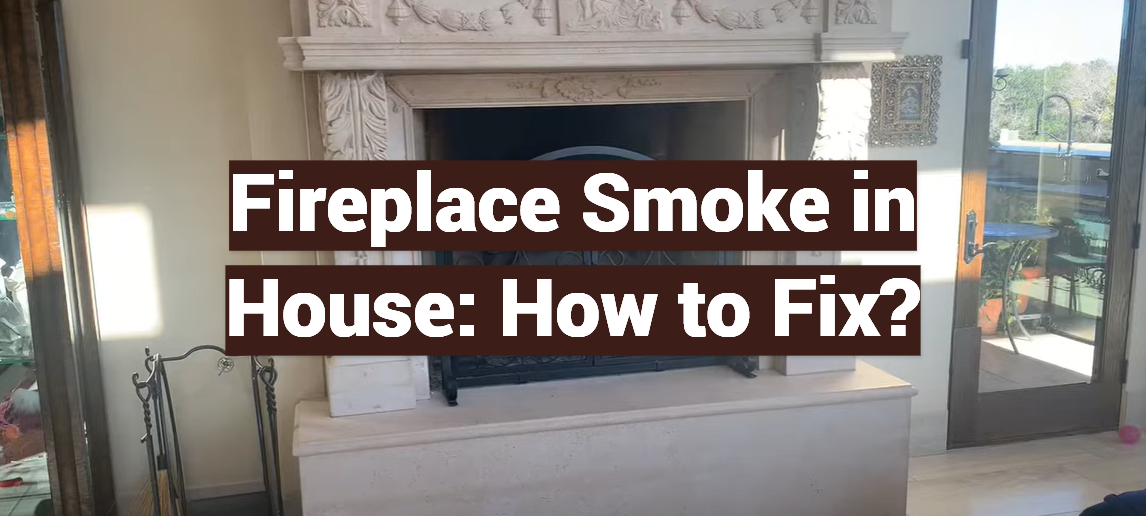
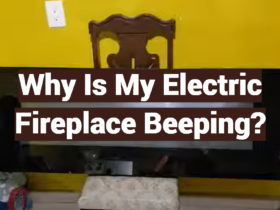
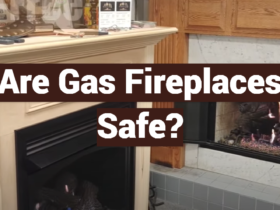
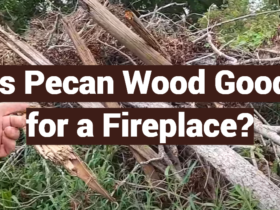
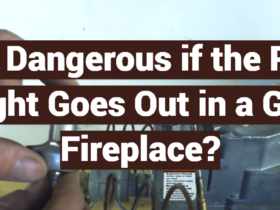
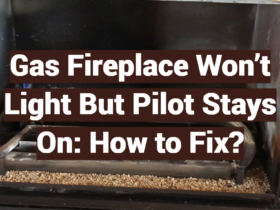


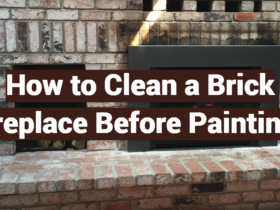
Leave a Review